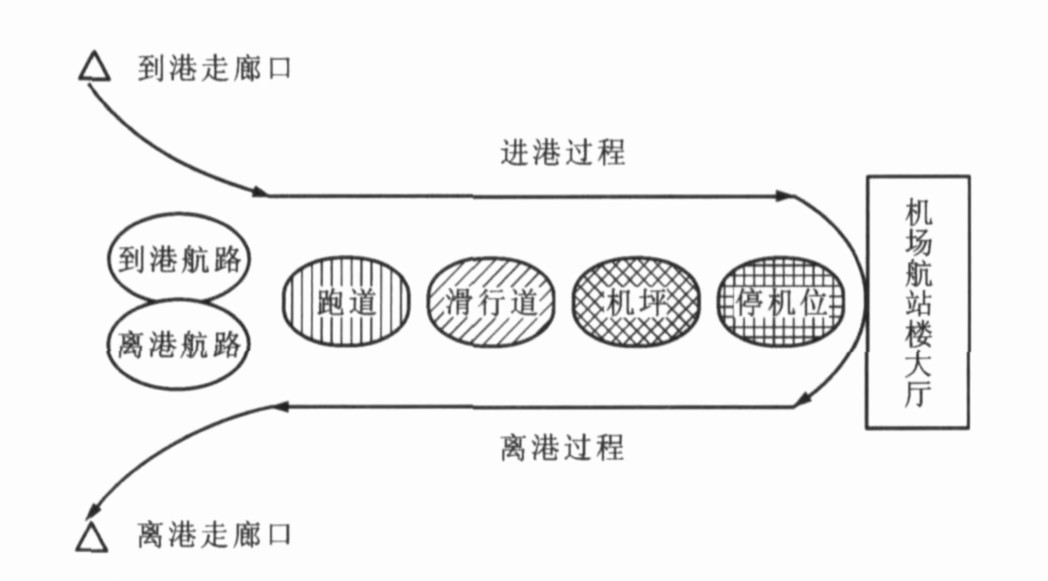Model and algorithm for airport gate assignment problem
-
摘要: 为探索中小型机场停机位指派问题有效合理的解决方法, 以乘客最小行走距离为优化目标, 建立了中小型机场停机位整数规划指派模型, 利用改进的启发式算法进行了求解。该算法可以缩小搜索空间, 在最坏情况下的计算复杂度是多项式的, 优于CPLEX软件的指数级计算复杂度, 具有更高的计算效率; 与CPLEX结果相比, 距离误差仅为5.2%, 指派结果令人满意。Abstract: To find feasible and effective solutions of gate assignment problem for medium-small airports, minimum passenger walking distance was taken as optimizing objective, an integer program (IP) model was developed, an improved heuristic algorithm was put forward to resolve the model, which can reduce search space and improve resolution efficiency.Computation result shows that the model and the algorithm are feasible, the algorithm has higher resolution efficiency and lower computational complexity (polynomial) compared with that (exponential) of CPLEX, the computation error of the algorithm is 5.2% compared with the computational result of CPLEX.
-
Key words:
- traffic planning /
- gate assignment /
- integer program /
- heuristic algorithm
-
表 1 航班时刻
Table 1. Flight schedules
航班号 机型 到港时间 离港时间 登机旅客人数 到港旅客 中转旅客 离港旅客 总人数 F1 B757 09〯50 10〯30 90 50 60 200 F2 B747 10〯00 13〯45 180 60 150 390 F3 B757 10〯50 11〯10 60 50 90 200 F4 B767 11〯30 12〯20 80 50 90 220 F5 B737 12〯30 13〯15 50 20 50 120 表 2 行走距离
Table 2. Walking distances
停机位 旅客行走距离/m 到港 中转 离港 G1 400 700 500 G2 500 700 650 表 3 计算结果比较
Table 3. Comparison of computaiton results
航班号 飞机机型 启发式算法 CPLEX优化结果 停机位 行走距离/m 停机位 行走距离/m F1 B757 G2 595 G1 505 F2 B747 G1 485 G2 588 F3 B757 G2 618 G1 520 F4 B767 G2 607 G1 509 F5 B737 G2 596 G1 492 旅客平均行走距离/m 启发式算法 564 CPLEX优化结果 536 误差/% 5.2 -
[1] Yan S Y, Shieh C Y, Chen M. A simulation framework for evaluating airport gate assignments[J]. Transportation Research Part A, 2002, 36(5): 885-898. [2] Transportation Research Board National Research Council. Measuring airport landside capacity[R]. Washington DC: Transportation Research Board National Research Council, 1987. [3] Mangoubi RS, Mathaisel F X. Optimizing gate assignment at airport terminals[J]. Transportation Science, 1985, 19(2): 173-188. doi: 10.1287/trsc.19.2.173 [4] Yan S Y, Huo C M. Optimizing of multiple objective gate assignments[J]. Transportation Research Part A, 2001, 35(3): 413-432. [5] Jo G, Jung J J, Yang C Y. Expert system for scheduling in an airline gate allocation[J]. Expert Systems with Applications, 1997, 13(4): 275-282. [6] Haghni A, Chen M C. Optimizing gate assignments at airport terminals[J]. Transportation Research Part A, 1998, 32(4): 437-454. [7] Ahmet B. Procedures for providing robust gate assignments for arriving aircraft[J]. European Journal of Operational Research, 2000, 120(1): 63-80. [8] 徐肖豪, 姚源. 遗传算法在终端区飞机排序中的应用[J]. 交通运输工程学报, 2004, 4(3): 121-126. http://transport.chd.edu.cn/article/id/200403029Xu Xiao-hao, Yao Yuan. Application of genetic algorithm to aircraft sequencing in terminal area[J]. Journal of Traffic and Transportation Engineering, 2004, 4(3): 121-126. (in Chinese) http://transport.chd.edu.cn/article/id/200403029 [9] Gu Y, Chung C A. Genetic algorithm approach to aircraft gate reassignment problem[J]. Journal of Transportation Engineering, 1999, 125(5): 384-389. [10] Lim A, Rodrigues B, Zhu Yi. The over-constrained airport gate assignment problem[J]. Computers and Operations Research, 2005, 32(7): 1867-1880. -





 下载:
下载:


